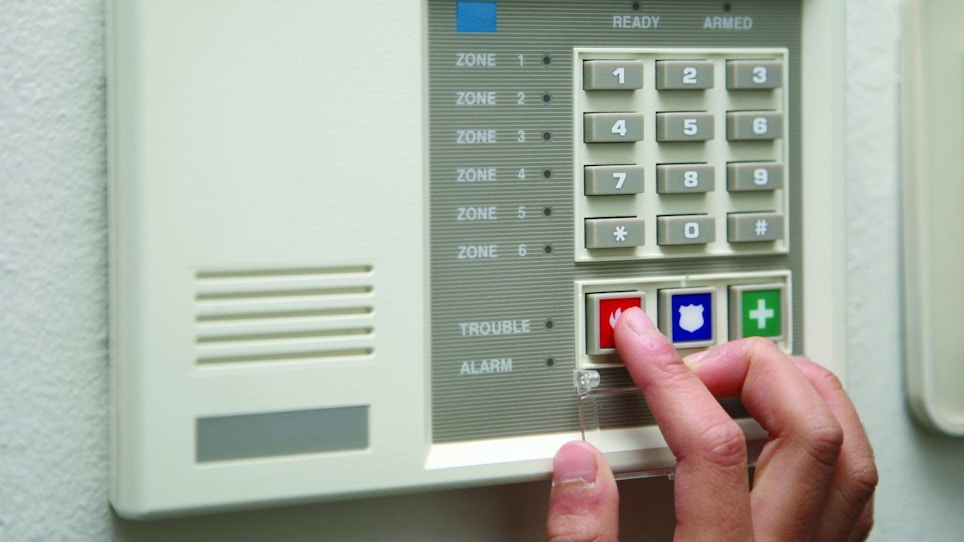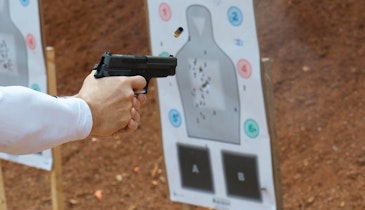How would you discreetly summon the police if approached at gunpoint when opening your store?
If you replied, “I’d just key in my alarm system duress code,” you’d have the right strategy in place
Unfortunately, this function on your alarm panel is often underutilized, often inactivated, forgotten over time or simply not practiced during tabletop exercises when discussing early-morning robberies with your key-holding supervisors.
How it Works
Your security alarm system is a key component of your overall security program and is often a costly initial investment. When properly installed and activated, it can alert intruders that they have been detected and that police are on the way. But if an adversary forces an authorized user (you) to disarm the burglar alarm under stress, that adversary will often gain early-morning entry without alerting emergency responders.
Therefore, alarms in locations that contain firearms are typically programmed with a “duress code,” which will disarm the alarm while sending a panic signal to the central station monitoring company and, in turn, summon the local law enforcement agency.
Sometimes referred to as a “panic alarm,” the duress code is typically a two-number pin that, when keyed into the alarm control panel, will turn off the location burglar alarm system and simultaneously but discreetly alert the central monitoring station personnel that your personal safety is in jeopardy and that you need immediate assistance. When properly activated on most modern alarm control panels, simply switching the last two PIN numbers of the user’s actual alarm code will also send a duress signal and activate the silent duress alarm. When this function is deployed, the monitoring company would not typically call the location to verify if there’s an actual emergency, and instead quickly dispatch the local police to investigate. You can verify with your alarm provider which process is appropriate for you.
There are other ways to activate a duress code. In some locations, and depending on which monitoring company you employ, a dispatcher may first call your location when the duress signal is used and ask for a password to indicate “all safe.”
When the employee answering the phone provides any word other than the pre-established “all safe” password or the correct “distress phrase,” police would also be dispatched, knowing you’re in trouble. This second option has been viewed as cumbersome by many and, as such, has been eliminated by most alarm monitoring agencies, but if you have an older system, this may be how it functions.
The important point here is you should review your burglar alarm system controls. Make sure your duress code is set up, tested and working correctly before you need to use it.
Communicate the Code
Over several years of not incurring any situations in which the duress code or phrase would be used, knowledge of what it is and how it works may become lost or forgotten. This may also be a failed topic of review in the hiring and training process of new key-holders. For that reason, remember to maintain testing of your duress code as part of your quarterly burglar alarm system and new-hire training program.
Finally, remind all key-holders that the existence of this function should remain confidential, just like each user’s individually assigned alarm system user code. If the information gets out about how the duress code process works, it could compromise the integrity of your security program and jeopardize the lives of trusted employees.
In addition to making duress code training part of your security program, you should conduct periodic exercises with your key-holders reviewing what to do in an actual situation in which hostile adversaries may attempt to rob your location upon your employees arriving in the morning or exiting at night.
It’s one thing to talk about how alarm systems work and what to do, but it’s another when the stuff hits the fan. Having walked and talked through how to react in unexpected high-stress situations can go a long way toward ensuring a safe outcome to an otherwise dangerous situation.
Using the Code Isn’t Mandatory
I must stress that just because you have the duress code burglar alarm function activated doesn’t mean you have to use it. There may be times where the better decision is to allow the perpetrators to do what they came ready to do and not summon authorities using the duress code process, as it may put lives in jeopardy.
Not every situation can be predicted. You and your staff should be prepared to judge the situation at hand and make the call about the best way to proceed if they are ambushed when opening or closing your store. While an inventory loss will be tough to swallow, protecting the contents of your store is not worth your life or the lives of your employees.
Consistent and ongoing training will help your team become more alert, more cognizant of their surroundings, and more prepared to prevent unexpected incidents from occurring, and it will teach them how to respond safely when necessary.
NSSF’s security training modules for FFLs are available at OperationSecureStore.org and are a great place to start. The NSSF’s Store Security Audit Team is also standing by to assist you with physical or operational security and safety issues, staff training and post-burglary crisis management, and NSSF partners with a variety of security product vendors to offer members-only pricing. Login to the NSSF member portal at NSSF.org to discover more.
John Blocker is the Security Consultant Team Member for the National Shooting Sports Association.






